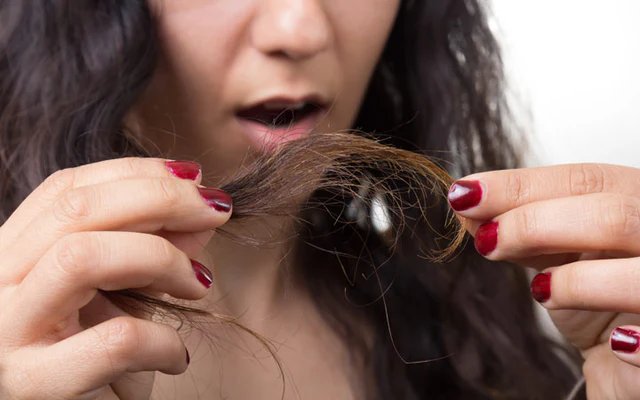Split ends can be frustrating for anyone striving for long, healthy hair. They cause your hair to look frizzy, dull, and unhealthy, often tempting you to reach for the scissors. But what if you want to maintain your hair length and still keep split ends at bay? Fortunately, there are effective ways to prevent split ends without cutting your hair, ensuring your locks remain strong and beautiful.
In this article, we’ll explore the causes of split ends, prevention strategies, and hair care tips that help maintain healthy strands. Plus, we’ll touch on a beauty-related keyword, How to Choose Foundation Shade for Olive Skin, showing how subtle details matter in your overall self-care routine.
What Are Split Ends?
Split ends occur when the protective outer layer of the hair cuticle wears away due to damage, causing the hair strand to split into two or more sections. If left untreated, split ends can travel up the hair shaft, resulting in breakage and thinner hair.
Common Causes of Split Ends
| Cause | Explanation |
|---|---|
| Excessive Heat Styling | Frequent use of flat irons, curling wands, or blow dryers weakens hair fibers. |
| Chemical Treatments | Coloring, bleaching, perming, and relaxing damage the hair cuticle. |
| Rough Handling | Aggressive brushing, towel drying, or towel rubbing causes friction and breakage. |
| Environmental Damage | Sun exposure, pollution, and dry air dehydrate hair and cause damage. |
| Lack of Moisture | Dry hair is brittle and prone to splitting. |
| Overwashing | Washing hair too often strips natural oils that protect the hair shaft. |
How to Prevent Split Ends Without Cutting Hair
Preventing split ends starts with gentle care, protection, and nourishment. Here are the best practices:
1. Use a Gentle Shampoo and Conditioner
Choose sulfate-free shampoos and moisturizing conditioners formulated for your hair type. Sulfates strip natural oils, which can cause dryness and fragility. Hydrated hair is less prone to splitting.
2. Avoid Excessive Heat Styling
Heat tools are a major culprit in causing split ends. Minimize the use of straighteners, curling irons, and blow dryers. When using heat, always apply a heat protectant spray or serum.
3. Deep Condition Regularly
Use deep conditioning treatments or hair masks once a week to replenish moisture and strengthen hair strands. Ingredients like argan oil, shea butter, and keratin are excellent for repairing and preventing damage.
4. Handle Hair Gently
- Use a wide-tooth comb instead of a brush on wet hair to prevent breakage.
- Pat hair dry with a microfiber towel or a soft cotton t-shirt instead of rubbing aggressively.
- Avoid tight hairstyles that pull on the hair and cause stress on the ends.
5. Protect Hair From Environmental Damage
Wear hats or scarves when exposed to strong sunlight or harsh weather. UV rays and wind can dry out hair and weaken the cuticle.
6. Regularly Trim Split Ends
While this article focuses on prevention without cutting hair, occasionally trimming only the split ends can prevent further damage without significantly shortening your length.
7. Use Natural Oils and Serums
Applying oils like coconut, jojoba, or castor oil to the ends seals moisture and smoothens the hair cuticle, reducing the chances of splits.
8. Avoid Overwashing
Wash your hair 2-3 times a week to preserve natural oils that nourish and protect the hair shaft.
Home Remedies to Prevent Split Ends
| Remedy | How to Use | Benefits |
|---|---|---|
| Coconut Oil | Warm and apply to hair ends before washing | Moisturizes and strengthens hair |
| Aloe Vera Gel | Apply on ends, leave for 30 mins before rinsing | Repairs and nourishes hair strands |
| Avocado and Honey Mask | Mix and apply weekly for hydration | Deep conditioning and shine |
| Egg and Olive Oil Mask | Apply and leave for 20 mins, then wash | Protein treatment to strengthen hair |
Why Prevention Matters More Than Repair
Once split ends occur, the damage is irreversible. Prevention helps maintain hair health and appearance without frequent trims. This care routine encourages strong, resilient hair that grows longer and looks vibrant.
Connection to Overall Beauty: Choosing Right Products
Just like hair care requires attention to detail, makeup does too. For example, knowing How to Choose Foundation Shade for Olive Skin ensures a natural, flawless look. Understanding your skin undertones and testing foundation shades correctly enhances your overall appearance, just as proper hair care routines improve your hair’s health.
Frequently Asked Questions (FAQs)
Can split ends repair on their own?
No, split ends do not repair naturally. They must be trimmed or managed with preventive care to avoid worsening.
How often should I trim to prevent split ends?
Trimming every 8-12 weeks can help, but with proper care, you might extend this time and still maintain healthy hair.
Are natural oils effective in preventing split ends?
Yes, oils like coconut and argan seal the hair cuticle and add moisture, reducing breakage and split ends.
Can diet affect split ends?
Absolutely. A diet rich in vitamins, minerals, and proteins supports hair health and reduces damage.
Does brushing cause split ends?
Brushing too aggressively or on wet hair can cause split ends. Use a wide-tooth comb gently, especially when hair is wet.
Final Thoughts
Preventing split ends without cutting your hair requires a consistent routine focused on hydration, protection, and gentle care. Avoid harsh chemicals and heat, nourish your hair with oils and conditioners, and handle your strands with care.
Combining these hair care tips with your overall beauty routine—like learning How to Choose Foundation Shade for Olive Skin—will help you look and feel your best from head to toe.
Healthy, strong hair doesn’t have to come at the cost of length. With the right practices, you can keep your hair long, luscious, and split-end free for longer.







